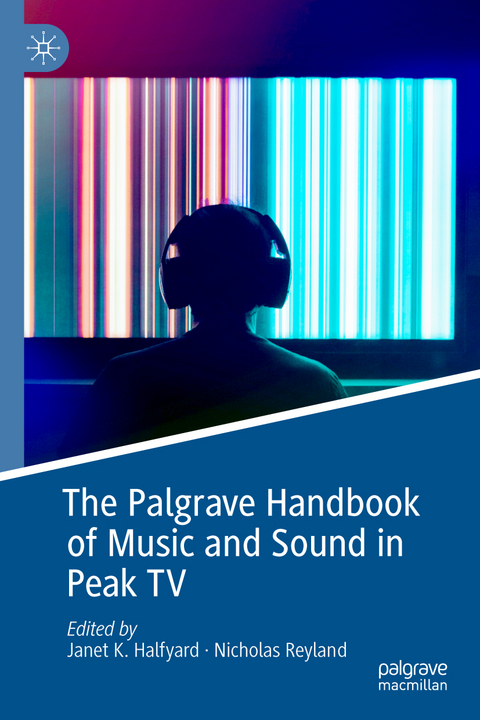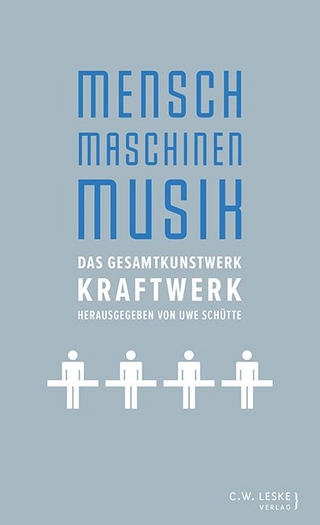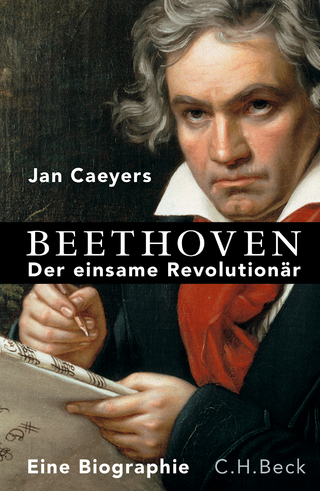
The Palgrave Handbook of Music and Sound in Peak TV
Springer International Publishing (Verlag)
978-3-031-62989-1 (ISBN)
- Noch nicht erschienen - erscheint am 28.10.2024
- Versandkostenfrei innerhalb Deutschlands
- Auch auf Rechnung
- Verfügbarkeit in der Filiale vor Ort prüfen
- Artikel merken
The Palgrave Handbook to Music and Sound in Peak TV charts the transformation of television's sonic storytelling during the new "golden age" of televisual narrative from the late 1990s to the early 2020s. Grounded in close analytical, critical, and theoretical work identifying the key traits of music and sound in this "peak TV" period, the book casts its critical net wider to develop interpretations of significance not just for screen music studies and musicology, but for screen and media studies too. By theorizing "peakness" with respect to sound and music, and by drawing together contributions from a diverse collection of prominent musicologists, media scholars, and practitioners, this handbook provides the authoritative guide to the role music has played in creating the success of some of the most culturally and commercially significant popular art of the early twenty-first century.
The volume contains 25 essays in three main sections-Concepts and Aesthetics, Practices and Production, and Audiences and Interpretations. Topics discussed include peakness, complexity, ostentatious scoring, antiheroes, memory, franchises, worldbuilding, nostalgia, maternity, trauma, actor's voices, title sequences, library music, branding, queer/camp scoring, kids TV, captioning, industry practices, HBO, and sound design. Shows examined include The Sopranos, The Wire, Game of Thrones, Battlestar Galactica, Westworld, Buffy the Vampire Slayer, Stranger Things, The Bridge, Dexter, Killing Eve, Mad Men, American Horror Story, Rings of Power, Fargo, Peaky Blinders, Call the Midwife, Twin Peaks, and Twin Peaks: The Return.
Janet K. Halfyard (Royal Conservatoire of Scotland, UK) is author of Danny Elfman's Batman: a film score guide (2004), Sounds of Fear and Wonder: Music in Cult TV (2016) and has edited the collections Music, Sound and Silence in Buffy the Vampire Slayer (2010) and Music in Fantasy Cinema (2012).
Nicholas Reyland (Royal Northern College of Music, UK). His books and edited collections include Music and Narrative since 1900, Zbigniew Preisner's 'Three Colors' Trilogy: A Film Score Guide, Lutoslawski's Worlds, Music, Analysis and the Body, and a special issue of Music Analysis dedicated to film music.
Part I: Concepts and Aesthetics. 1: Ostentatious Scoring: Bewitching the Complex TV Audience from The Sopranos to Wednesday; Nicholas Reyland. 2: Engaging Viewers in Peak TV through Music and Sound; David W. R. Brown.- 3: Music and Memory in Peak TV; S. Andrew Granade.- 4: Small Screen Silents: Peak TV, Ostentatious Sonic Absence, and the Neo-Silent Aesthetic; Peter Adams.- 5: Establishing the Musical Epic in Peak TV: Stranger Things (2016-) and Tales From the Loop (2020); Matt Lawson.- 6: Sounds of Menace: Geo-Immersive Music in Nordic Noirs; Michael Baumgartner.- 7: Congruous Incongruities?: Scoring the Complexities of the Antihero in Peak TV; David Ireland.- Part II: Practices and Production.- 8: The HBO Musical Effect: Musical Innovation and Transformation in the Era of Peak TV; Janet K. Halfyard.- 9: The UK's Golden Age of TV Branding: Sky Atlantic, Channel 4, and "Quality" American Imports; Melissa Morton.- 10: The Musicality of the Voice in Contemporary Television; Miguel Mera.- 11: An Approach to Scales in Some Twenty-First Century Television Music; Scott Murphy.- 12: Lost in Transcription?: Captioning Music and Sound in Peak Television; James Deaville.- 13: Hans Zimmer, Bleeding Fingers, and the Evolution of Library Music; Toby Huelin.- 14: Peak TV for Kids: Pastiche, Metadiscourse, and the Disney Channel Original Musical; Gregory Camp.- 15: Queer quality?: Reception, Creative Agency, and Excess in the Soundtracks of Ryan Murphy's Horror Television; Catherine Haworth.- Part III: Audiences and Interpretations.- 16: Scoring Complex Delights and Their Open Ends: Ramin Djawadi's Original Compositions for HBO's Westworld (2016-22); Julin Lee.- 17: Beyond Nostalgia: Hearing Anachronism in Westworld and Television's New Golden Age; Alexander Kolassa.- 18: Peak Prostheticity: Westworld's Player Piano and Imperialist Organologies; Naomi Waltham-Smith.- 19: Cinematic Complexity in Peak TV?: Amazon's Rings of Power and the Musical Extension of an Existing Franchise; Dan White.- 20: "This [Sounds like] a True Story": Scoring the Heightened Reality of Noah Hawley's Fargo; Amy Bauer.- 21: The Queen's Gambit and the Three Fantasies of Filmic Media: Image, Narrative, and Sound; Michael L. Klein.- 22: Notes About Nothing: Seinfeld and the End of the Sitcom Theme Song; Nathan Fleshner.- 23: I'll Hear You in Twenty-Five Years: Sonic Identifications in Twin Peaks (1990-91) and Twin Peaks: The Return (2017); Reba A. Wissner.- 24: By (Dis)order of the Peaky Blinders: Trauma and Anachronistic Soundtracking in the Contemporary Period Drama; Natalie Farrell.- 25: Re-Birthing Britain: Sounding Middlebrow Trauma in BBC's Call the Midwife; Erin Johnson-Williams and Michelle Meinhart.
| Erscheint lt. Verlag | 28.10.2024 |
|---|---|
| Zusatzinfo | Approx. 575 p. 75 illus., 10 illus. in color. |
| Verlagsort | Cham |
| Sprache | englisch |
| Maße | 155 x 235 mm |
| Themenwelt | Kunst / Musik / Theater ► Musik ► Musikgeschichte |
| Schlagworte | Composition • musicology • Peak TV • television music • Television sound • Television soundtracks • westworld |
| ISBN-10 | 3-031-62989-2 / 3031629892 |
| ISBN-13 | 978-3-031-62989-1 / 9783031629891 |
| Zustand | Neuware |
| Haben Sie eine Frage zum Produkt? |
aus dem Bereich


